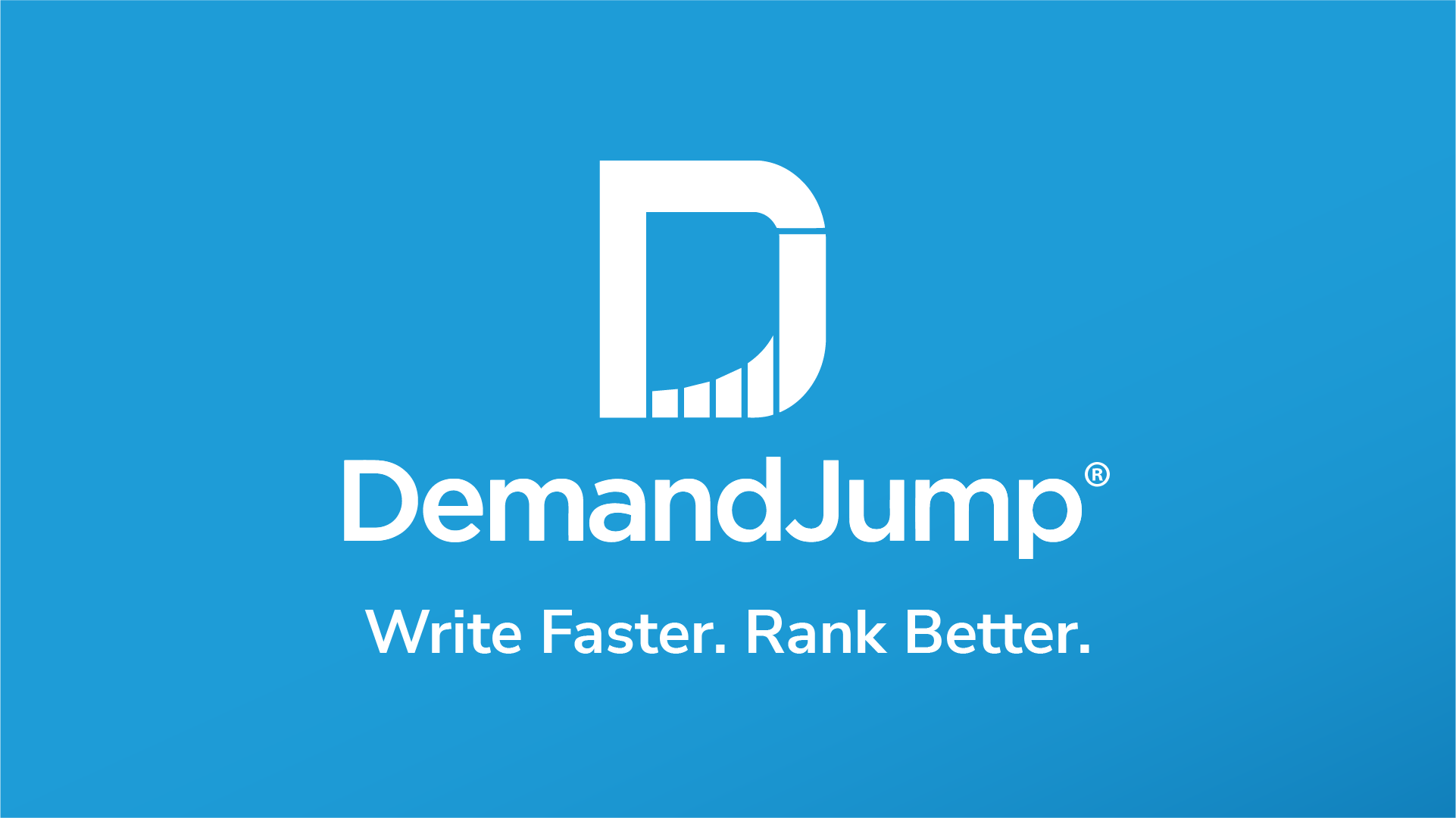See Insights in Action
By embracing DemandJump's approach to SEO, we have been able to increase our organic rankings within just 2 weeks of implementing recommendations. This helped us see a 22% increase in organic search month-over-month.
Robert Jacko Vice President Digital Marketing @ Homage
DemandJump has become a crucial extension of our marketing team, providing game changing insights to fuel and propel all aspects of our digital marketing efforts. The DemandJump platform is a must have, we are seriously impressed.
Tim Lavinder Director of Ecommerce @ Hotsox
We used to spend hours looking for insights in dozens of tools and reports. Now we log into one place to find out what customers are doing and how to meet them where it matters most.
Zach Roop Digital Marketing Manager @ Dometic
We use DemandJump recommendations as our digital to-do list. We love going in and seeing the recommendations and knowing what to do next.
JoLynda Wilson Marketing Director @ IWC
Trusted by Brands Around the World
Consumer Insights
Find out what your target audience cares about for any category, product, or topic, with the click of a button.
Know What to Write About
Eliminate the guesswork and align your content strategy to actual user behavior.
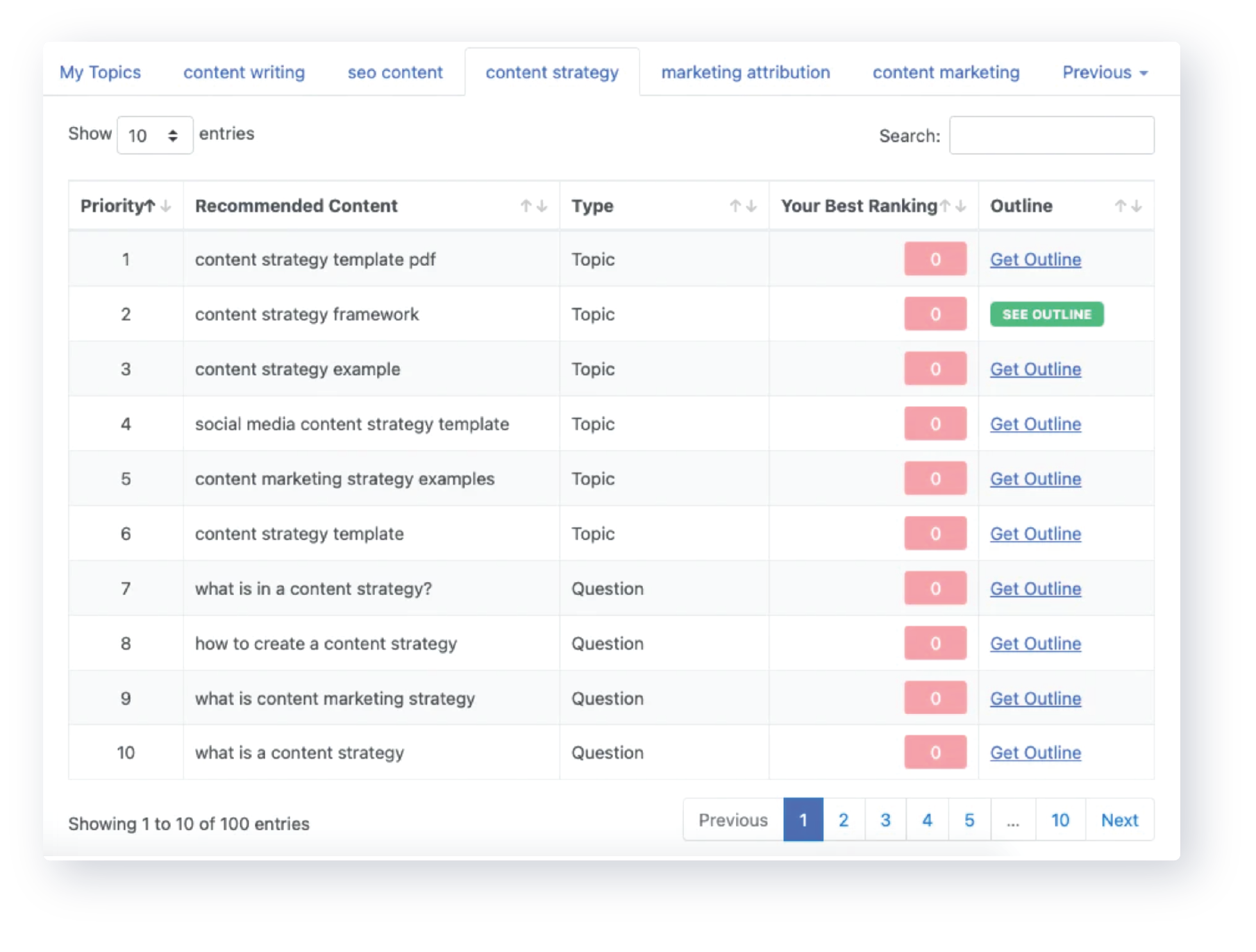
Know Which Keywords Matter
Get a prioritized list of the exact keywords that matter for your audience.
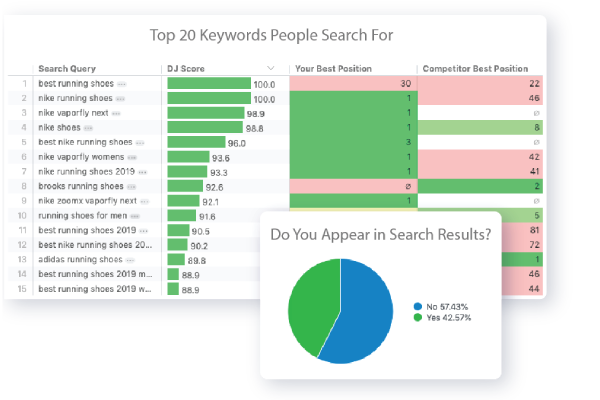
Automatic Customer Journey Map
Automated customer journey mapping tells you the keywords, questions, websites and videos your audience consumes for each stage of the buying process.
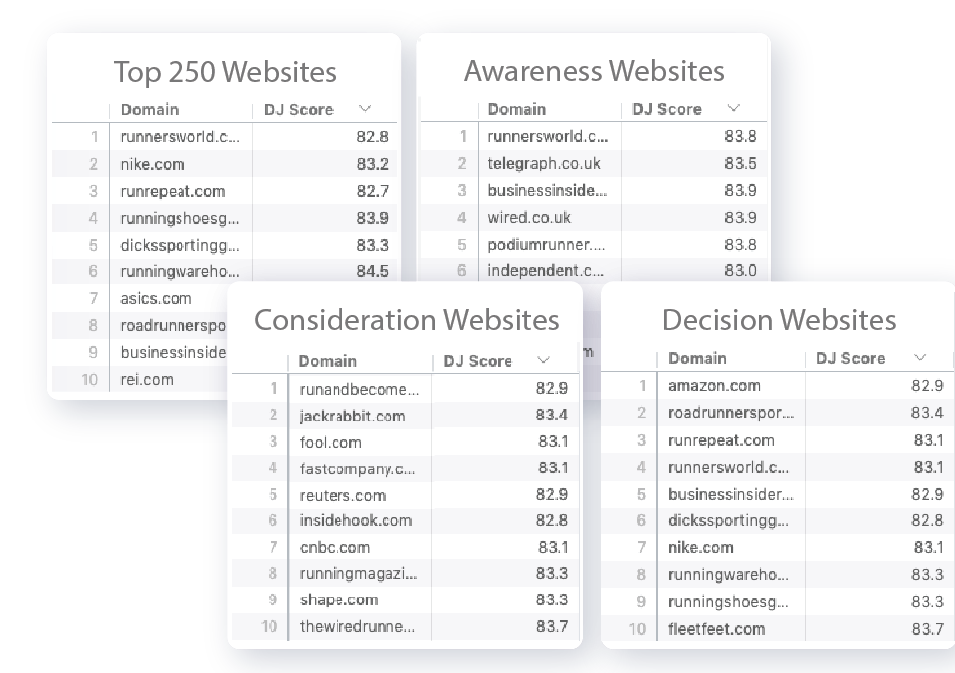
Get Free Consumer Insights Now
What Is Consumer Behavior?
Understanding why thousands of consumers take a specific action is part science and part art, all of which comes together in broadly-defined consumer behavior theory models. These consumer buying behavior models attempt to explain why consumers make specific purchasing decisions. However, there are a multitude of factors influencing consumer behavior. It's often challenging to determine your own personal motivations for making a purchase or taking an action, which can make it extremely difficult to assign motivations to groups of others. Marketers spend a significant amount of their time (and budgets!) digging deep into data, analyzing trends and looking for ways to define the characteristics of consumer behavior. Are people buying on impulse? Because their friends made a recommendation? Trying to keep up with the Joneses? Everything from marketing and advertising to seasonality and pay periods - and certainly emotion! - can have an impact on when and how individuals decide to finalize their buying decision. It can become an endless task for marketers trying to research and and understand this complex buying behavior.
With greater access to consumer behavior analysis and insights than ever before, marketers are presented with exciting opportunities to look deep into consumer psychology to assign and plot motivations for purchase. When you pair marketing insight with the advanced analytics tools that are now available, marketers have more ammunition than ever before to closely target their messages to the audience that is most likely to respond. An understanding of consumer behavior in marketing is critical, and it helps to start by gaining a deeper understanding of the four key models of consumer behavior and how they can be applied to the work you are doing as a marketer.
Click here to get free consumer insights on any topic.
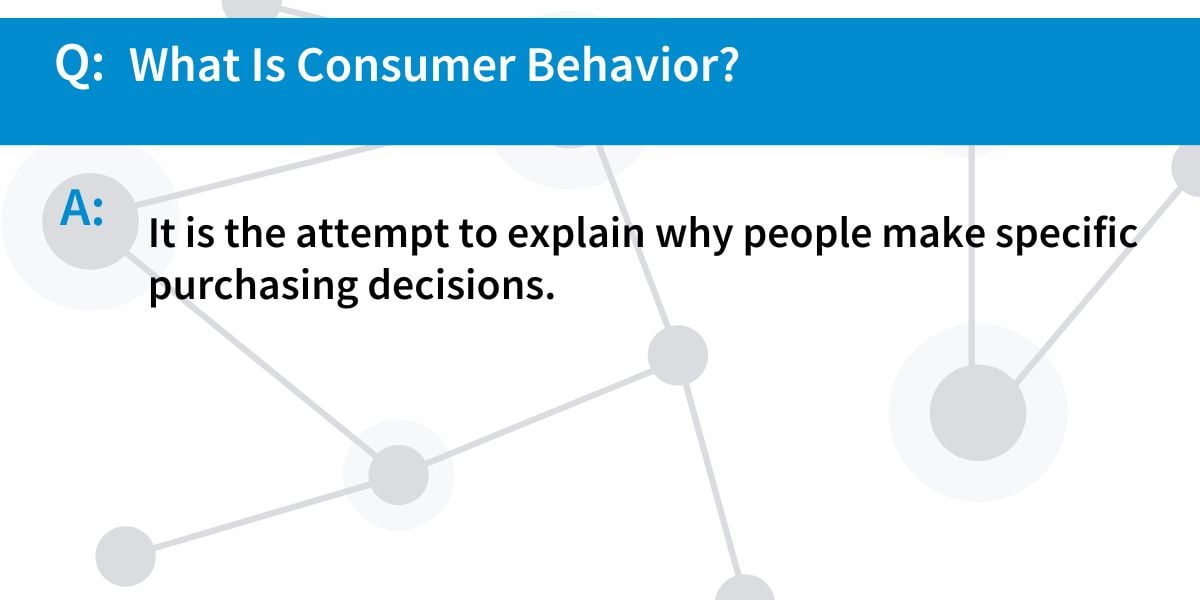
What Is Consumer Theory?
A branch of microeconomics, consumer theory addresses how people decide to spend their money based on their individual preferences and budget constraints (Investopedia). There is a wide range of variables that help determine when or if a consumer makes a purchase. You will also hear this referred to as 'purchase intention' and can include:
- Online reviews
- Brand familiarity
- The emotional state of mind of the consumer
- Brand purpose and social responsibility
- Convenience
There are no comprehensive lists of reasons why people make a purchase. These are a few of the behaviors that marketers analyze on a regular basis, but you could easily include additional components of behavior such as demographics and psychographics, the integrated brand experience, social influence from others, internal or personal factors, political factors and more. It would be an overwhelming task to interpret individual purchasing behaviors, but analysts have found four key models that describe the group characteristics of consumer buying behavior.
Four Theories of Consumer Behavior
There are many different models of consumer behavior and while it can be challenging to understand the entire scope, there are four key theories that provide some insight into motivations.
Theory of Planned Behavior
Previously known as the Theory of Reasoned Action, the Theory of Planned Behavior was developed to predict the intention of an individual to behave a certain way in a specific time and place. The goal of this theory was to predict and explain behaviors over which individuals have the ability to self-control such as substance use, drinking, smoking and health services. This theory takes into consideration everything from attitudes and social norms to the perceived power and behavioral control that consumers have over their decisions.
Engel, Kollet, Blackwell (EKB) Model
Understanding consumer behavior with the Engel, Kollet and Blackwell (EKB) model involves consumers passing through each of five steps when making a purchase decision. Introduced in 1968, the EKB model shows that marketers can influence decisions at two turning points in the consumer's journey to purchase: during the initial information stage and again in the phase of external influences. The stages include:
- Problem recognition
- Information search
- Evaluation and selection
- Store choice and purchase
- Post-purchase activities
If this sounds similar to a sales funnel, you are correct! Marketers today still utilize a variation of this theory in creating successful landing pages and direct marketing campaigns. This is why it is critically important for marketers to understand consumers. This consumer behavior model also highlights the importance of post purchase behavior, another aspect that marketers must keep in sight.
Motivation - Need Theory
Abraham Maslow's hierarchy of needs was initially introduced in 1943, causing quite a ruckus in the psychology community. He posited that individuals act to fulfill their needs in order of importance, starting with their survival, safety, love, esteem and eventually self-actualization once all of the other needs are being adequately met. Marketers utilize Maslow's theory to motivate consumers to purchase based on targeting a particular section of the hierarchy, instilling a sense of need-based urgency. There are many factors influencing the consumer buying decision, but marketers often find that appealing to this need-based urge yields results.
Hawkins Stern Impulse Buying
In the Hawkins Stern model of consumer behavior, the factors influencing consumer behavior are more externally-focused than in other models. Marketers are able to directly influence buying behavior by taking advantage of impulse buying in four different ways:
- Pure impulse purchases, such as grabbing a soft drink in the checkout line
- Reminded impulse buys, including placing paintbrushes next to paint in a home improvement store
- Suggested impulse purchases, where individuals are reminded of an upgrade or add-on such as warranties or software upgrades
- Planned impulse decisions, when consumers have made a decision to purchase but not on the specifics of what they want to buy
While none of these models are perfect, they do help illustrate the various ways that consumers can decide to make a purchase. Each model can drive consumer behavior research, which marketers can ultimately analyze and determine if there are patterns that can be utilized to hone more effective sales and marketing efforts. With a full understanding of consumer behavior models a marketer is better equipped to create what essentially amounts to a consumer behavior abstract that will help inform leadership and impact decision making.

Consumer Behavior Research
Anytime companies are launching a new product or service and looking for ways to maximize their current sales volume, they are likely to engage in consumer research. These targeted questions and studies are intended to gather feedback directly from consumers and use that information to drive more well-informed decisions for product development, pricing, shifts in marketing strategy and more. Some consumer behavior research topics may include:
- Consumer buying habits
- Buying channel
- Consumer opinions about a product or service
- Consumer thoughts on competitive products or services
- How specific situations such as online reviews or mobile websites impact consumer buying behavior
This data may be either objective such as statistics on buying habits or subjective, based on opinions that are captured via focus groups, surveys or questionnaires. With 95% of shoppers taking the time to read online reviews before making a purchase, studying the way reviews are written, the quantity of reviews and the structure of the review program has provided for fascinating conversations at all levels of an organization. This consumer buying process research is critical for developing a comprehensive marketing strategy but it is not always easy for marketers to collect.
Don't have the time or resources to develop your own consumer marketing strategy? Start your Free Trial with DemandJump today and get instant access to automated consumer journey mapping specific to your company.
Methodologies Used in Consumer Research
While you may be most familiar with consumer research in the form of a quick web form that often comes to you after an online purchase, there are a variety of ways that researchers and marketers are able to gather objective and subjective feedback on their topics of interest.
- Focus groups and one-on-one or group interviews require a trained facilitator who is careful not to skew the group's opinion in one particular direction. Individuals in a focus group should be made to feel comfortable expressing their honest opinions. When managed correctly, focus groups can be one of the most effective ways to gain deep knowledge of how consumers feel about your product or service -- what can be improved, and what you should never change or you risk losing sales.
- How do you measure consumer behavior? Surveys and questionnaires can be extremely short Net Promoter Score questions or a highly-detailed survey that includes demographic information on the survey recipient, multiple questions and complex scenarios. Surveys often collect consumer insights using both subjective and objective data at the same time, mixing questions such as how often an item is purchased (objective) with the survey taker's feelings about the product or service (subjective).
- Ethnographics and psychographics are ways to dig deep into your consumer's background and lifestyle, gaining a deeper understanding of the meaning behind the actions an individual takes. While this type of research can be quite expensive, it does help you more tightly define target markets in order to find lookalike audiences.
- Research panels are one of the most time- and energy-intensive options for discovering consumer behavior, simply due to their long-term nature. Research panels often last multiple years, providing a holistic picture of consumer behavior over time.
Understanding how you can utilize qualitative vs quantitative data starts with consumer insight research. Now, why is it important to study consumer behavior? It is important to use this consumer behavior research in gaining customer insights. This research can be used to gain insight into your current customer base, or consumers that you are looking to convert to customers.
Gaining Insight Into Consumer Behavior
Understanding consumer behavior is important in all fields, but you may be wondering what is the importance of consumer behavior in advertising, or why is it important for marketers to study consumer behavior? The American Marketing Association explains the insight into consumer behavior as "understanding the 'Why' behind the buy". Gathering information allows marketers to analyze data including purchasing behavior, preferred methods of sharing feedback and more against the background of current trends and economic realities. What is an example of an insight? The word "insight" is often defined by using terms such as intuitiveness and awareness - important considerations in the minds of marketers who are seeking information on why their products and services are working for their audience or not. By listening to the voice of the customer as filtered through the lens of research, marketers are better able to understand consumer behavior.
Consumer insight research can help marketers avoid unexpected blind spots in their messaging and may even be the vehicle needed to help convince senior leadership that changes need to be made to maintain and grow sales volume. Now that there is an understanding of consumer behavior and the research around behavior you may be asking yourself, "How do you use consumer insights?". How do I make an insight report? Or, how do I present this data to leadership? Uncovering the tremendous amount of value in the data that is being captured on a daily and weekly basis can be overwhelming to even the most dedicated metrics-based marketer.

Consumer Insights Data
You've created surveys. You've looked for sales trends over time. Your consumer behavior research methods include both qualitative and quantitative methodologies and you feel confident that you've removed as much researcher bias as possible. Now what? Shifting all of this data that you've gathered into actionable insights is where many marketers start to stutter. Simply knowing which data points are important and which are unnecessary "noise" is both an art and a science, and often comes down to gut feelings about how consumers are reacting to a particular stimulus.
Creating consumer insights and generating customer insight reports from these scattered data points is one of the reasons that the role of the data scientist is growing dramatically in today's business and marketing world. These fabulous individuals are able to see patterns from within an unstructured mish-mash of information, bringing together a seemingly-unexpected perspective on tough problems. Data scientists are doing everything from predicting consumer behavior to creating machine learning and AI models, but only the largest organizations usually have access to these cross-functional individuals. Able to focus on both the business and technology sides of a problem, data scientists are blazing trails using consumer insight tools and delivering valuable models that help marketers and sales professionals work through a more regimented consumer insights framework. Compiling and analyzing consumer behavior data into actionable insight is involved and most teams don't have a dedicated data scientist to commit the time for understanding how to analyze, use, and present a range of information to provide customer insights.
The good news: There are customer insight tools out there for those companies that do not have a data scientist on the team but understand the importance of customer insight reporting. There are advantages to using these tools, mainly time. DemandJump's Consumer Insights platform provides automated actionable insights on any topic or phrase of interest, as well as informing on how you stack up against your competitors for searches around that same topic.
Types of Consumer Insights and Examples
Understanding your consumer's wants and needs is an exceptionally powerful tool when wielded by smart marketers. Consumer insights offer a new way to look at a current problem, often resulting in a breakthrough that allows you to revolutionize your product or service or create the next evolution for your consumers. Nike famously used consumer insights in their "Find Your Greatness" campaigns, which came about after marketers realized that the majority of individuals purchasing Nike shoes and clothing were not professional athletes, but they aspired to be more like these athletes.
Without this dip into the mind of Nike buyers, the marketers at the mega-brand likely would have used different messaging and may not have had the stellar results they received from the campaign. A wide range of data was used to drive these insights, such as a consumer insight survey that resulted in an incredibly powerful campaign that encouraged everyone to find the greatness within. As you can imagine, the individuals that worked through these data-driven decisions needed to have a mix of knowledge from marketing to statistics and even programming to tease out the necessary details that helped make solid decisions based on key consumer insight before moving the campaign forward.
For customer journey mapping and consumer behavior examples check out Consumer Central, a video series created to show how even some of the most well known brands are still missing when it comes to aligning to different types of online consumer behavior.
When it comes to understanding and the application of consumer behavior research, marketers are king. However, there is always room to improve on current practices. DemandJump offers a Free Trial of their Consumer Insights platform which will simplify the research and reporting aspect of understanding the online shopping behavior of your target audience.
Consumer Insights Jobs
If you are intrigued by the idea of working in the consumer insights field and helping brands gain a better understanding of their customers, you're not alone! Careers in consumer insights are growing, with consumer insights analysts becoming a very important asset for active marketing teams. According to Forrester Research, individuals in the customer insights field "capture, manage, analyze, and apply customer knowledge to help your business win, serve, and retain customers." There is a range of options for marketers and technical professionals to consider in the consumer insights career path:
- VP of Customer Insights, Data Analytics, Business Analytics or Customer Intelligence. These executives set the direction for customer intelligence, understanding how to build teams of data-driven marketers. Usually requiring more than 15 years of experience and an advanced degree at an executive level, Glassdoor shows that the average salary for these individuals is over $187,000 per year.
- Director of Consumer Insights, Research Director, or Competitive Intelligence Director. A director in this space could expect to make around $132,000 per year, with a minimum of 8-10 years of experience. An advanced degree such as a Master's degree may be required. Directors and above will often receive a bonus on top of their base salary.
- Consumer Insights Manager. The national average salary for a Consumer Insights Manager is around $63,000, and these individuals may also be referred to as Research Managers. With slightly lower qualifications required, Managers in this space often need at least 5 years of experience and a 4-year degree to be successful.
- Consumer Insights Analyst. These highly-technical individuals begin the crossover between marketing and technology, and their relatively high salary is representative of that fact. Researchers or User Operations Analysts are other terms often used to refer to these teammates, whose salary range in the US is around $54,000 according to Glassdoor.com.
- Data Scientist. Also referred to as Data Analysts, Senior Data Scientists or Quantitative Analysts, these tech-heavy positions have a salary range of over $113,000 per year. Oddly enough, many of the positions only require 1-2 years of experience, although an advanced degree in Computer Science, Mathematics or Statistics is highly favored.
If you are interested in the consumer insights career path, there are a few entry level consumer insights job options that you might want to consider, specifically as a paid Intern for a well-established brand and team. This provides you with an exceptional opportunity to learn a lucrative set of skills.
Consumer Insights Companies
Consumer insights companies, often referred to as market research companies, gather and analyze vast fields of data across a specific industry. This can include everything from consumer data, the purchasing power of the industry, vendors and competitors for a particular industry, current, past and projected sales figures and more. Many brands work directly with a market research company if the brand doesn't have the in-house staff available to complete the complex calculations and research needed to successfully understand consumer behavior and draw the necessary insights. Certain marketing research firms cull data directly from consumer habits, such as the A.C. Nielsen Co. that specializes in capturing and analyzing data around consumer television viewing habits. Other research firms may focus their efforts based on the requests from their supported brands, utilizing standard research tools and frameworks to deliver insight that is actionable for the marketers supporting large brands.
The world of consumer insights can be overwhelming, but the power associated with harnessing these tools can provide a significant competitive advantage for your brand. When you're ready to learn more about how you can cut through the clutter of data and glean true insights from your consumer marketing data, contact DemandJump or request a free trial here. You will explore the relationships between your consumers and other brands in your industry as well as finding out various topics that matter to your consumers. Remove the uncertainty from your marketing efforts and reveal more of the competitive landscape than ever before such as seeing your target consumer's journeys across the web.
Insights Resources
Consumer InsightsConsumer Behavior
Consumer Behavior for Marketers
Consumer Insights and Analytics
Customer Insight Research Techniques
Customer Journey Map
Pillar Page Content
SEO Content Strategy
Types of Consumer Insights
Other Resources
Channel Optimization
Consumer Behavior
Consumer Insights
Consumer Insights and Analytics
Competitor Analysis Tools
Content Marketing
Content Strategy
Cross-Channel Analytics
Customer Insight Research Techniques
Customer Journey Map
Market Intelligence
Marketing Analytics Techniques
Market Research
Marketing Attribution
Opportunities of Internet Marketing
Types of Consumer Insights




